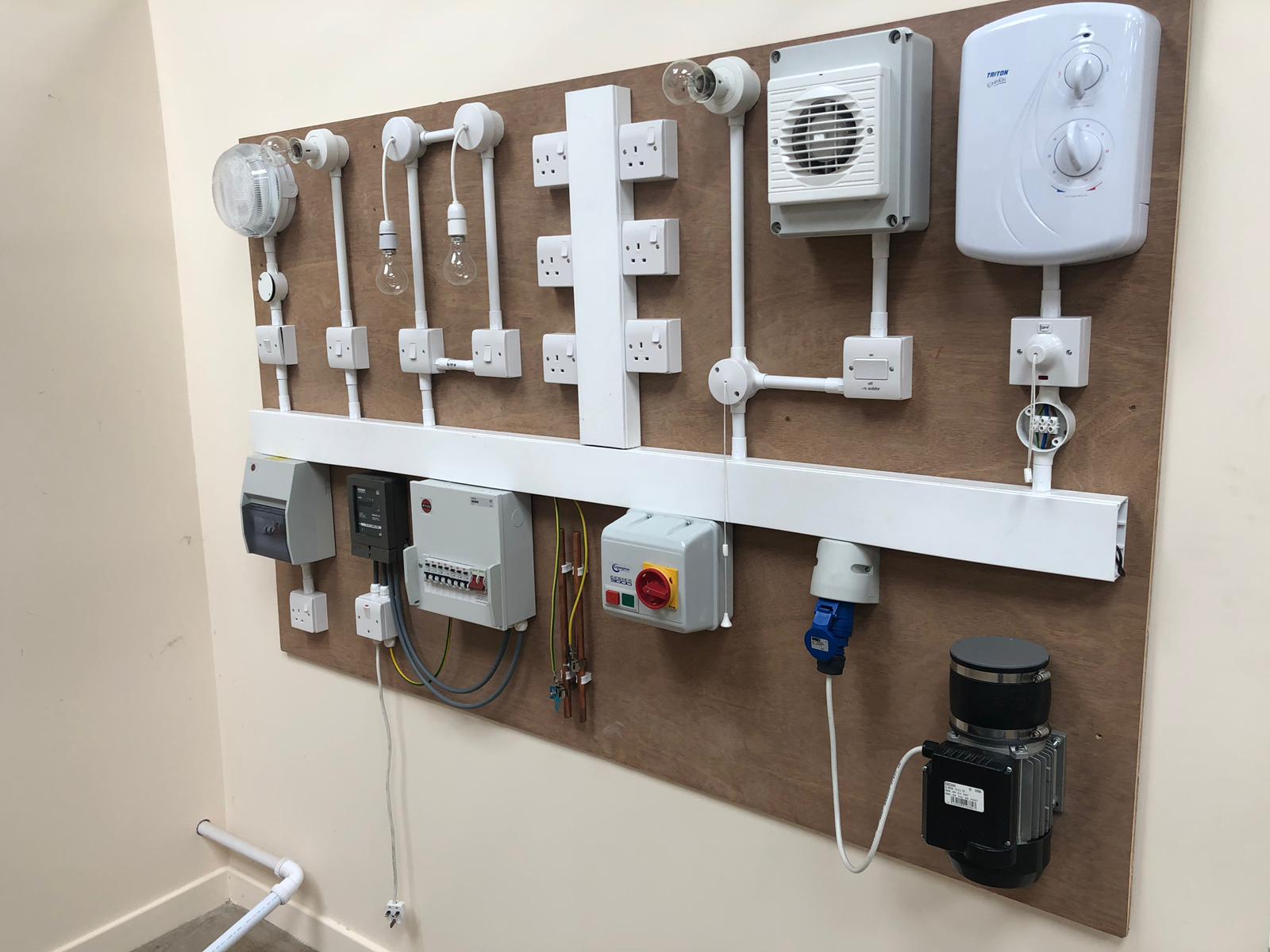The Ultimate Guide to Electric Installation: Tips and Techniques for a Safe and Effective Home Wiring System
In the world of home maintenance, couple of facets are as crucial yet commonly neglected as the electrical circuitry system. By checking out the nuances of electric security actions and energy-saving techniques, this detailed guide will lose light on the details of home electrical wiring, encouraging people to take cost of their family's electrical infrastructure.
Understanding Electrical Precaution
To make sure the safety of both individuals and residential property, understanding and implementing proper electrical safety and security measures is critical in any kind of home wiring project. It is important to perform a thorough evaluation of the electrical system prior to beginning any type of circuitry task to determine potential hazards or problems that need to be resolved.
In addition, using the suitable devices and equipment is vital for keeping security throughout electric installments. Shielded handwear covers, voltage testers, and safety eyewear are some of the basic safety equipment that need to be put on to stop electrical shocks or mishaps. It is likewise essential to de-energize circuits before dealing with them and to label all circuits and breakers clearly to stay clear of confusion.

Important Devices for Home Circuitry
Making certain the appropriate execution of electric safety and security procedures in home wiring jobs involves making use of a specific set of necessary devices designed to promote the installation procedure properly and securely. Some of the key devices needed for home wiring tasks consist of a voltage tester for examining real-time wires, wire strippers for removing insulation from wires, a wire cutter for precisely cutting wires to length, a screwdriver set for protecting electric parts, electrical tape for insulation and protecting connections, a cable television ripper for stripping cord sheathing, and a multimeter for determining voltage, present, and resistance.
Step-by-Step Electric Installation Overview
Beginning an electrical installation task requires careful preparation and adherence to security guidelines. Before beginning any work, ensure you have a detailed plan laying out the format of the electric system, consisting of the positioning of outlets, buttons, and fixtures. Take into account the power requirements of each tool to determine the suitable cable gauge and circuit breaker sizes.
The initial step in the setup procedure is to shut off the power supply to the area where you will certainly be functioning. Use a voltage tester to confirm that the circuits are de-energized before touching any kind of cords. Next, meticulously eliminate existing fixtures or electrical outlets and disconnect the cables.
When mounting new wiring, run cords with wall surfaces and ceilings, protecting them in place with ideal fittings. Adhere to regional structure codes and maker instructions for appropriate wire setup and connections. BRE Electrical Solutions. Make sure to classify wires for very easy recognition and future upkeep

Troubleshooting Common Circuitry Issues
Having actually completed the installation procedure as detailed in the previous subtopic, troubleshooting usual circuitry issues is a necessary ability for ensuring the security and capability of your electric system. One typical concern is a stumbled breaker, often triggered by overloaded circuits or a brief circuit. To troubleshoot this, locate the breaker panel, identify the stumbled breaker by trying to find the one not completely in the "on" placement, and reset it by flipping it completely to "off" and then back to "on." Another common issue is a defective outlet, defined by no power or intermittent power supply. Make sure the outlet is not managed by a switch, after that make use of a voltage tester to look for power. If there is no power, shut off the circuit, examine the electrical wiring links for any kind of loose or broken wires, and change the outlet if required. Continuously flickering lights can indicate loose circuitry connections or an overloaded circuit. To resolve this, check and tighten all wire connections in the impacted fixtures and buttons and rearrange the tons on the circuit to balance the electrical demand. Consistently checking and immediately dealing with these typical wiring problems will certainly maintain the safety and security and performance of your home BRE Electrical Solutions electric system.
Tips for Energy-saving Electrical Solutions
For optimal power efficiency in electric systems, implementing wise methods and making use of energy-saving modern technologies is critical. One vital suggestion for attaining an energy-efficient electrical system is to update to LED lights. LED bulbs eat substantially much less energy than standard incandescent bulbs and have a longer life expectancy, making them a cost-effective option in the long run. Additionally, setting up programmable thermostats can assist regulate home heating and cooling down systems, reducing power waste when no one is home. Another technique is to buy energy-efficient appliances that are power celebrity accredited, ensuring they satisfy high criteria for energy performance. Proper insulation and sealing of home windows, doors, and electric outlets can likewise prevent energy loss, eventually reducing the workload on electric systems. Finally, take into consideration incorporating renewable resource resources like solar panels to further decline dependence on typical power grids. By incorporating these energy-efficient suggestions and innovations, property owners can not just save cash on their power expenses yet likewise reduce their environmental impact.
Conclusion
Finally, carrying out appropriate precaution, using essential tools, complying with a step-by-step installment guide, troubleshooting common concerns, and integrating energy-efficient ideas are crucial for a risk-free and efficient home circuitry system. By sticking to these practices, homeowners can ensure the long life and performance of their electrical installations. It is crucial to prioritize safety and security and performance when it concerns electrical work in order to stop potential dangers and to preserve a reliable electric system in the home.